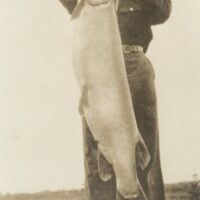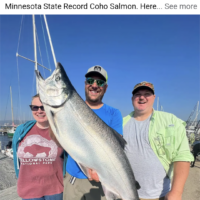I can’t find anything on it dated in 2024. The most recent information I can find is still from 2023. This is what it says.
Expanding Catch and Release
The other significant piece of the DNR’s recent proposal is the expansion of its “catch-and-release” record category. The category was established six years ago in response to demands from conservation-minded anglers—some of whom complained that they’d rather set a record-sized fish free instead of killing it just to have their name in a record book.
With catch-and-release records, anglers don’t have to make that choice. Unlike traditional weight-based records, which require the fish to be brought in and weighed on a certified scale, all that is needed for potential catch-and-release records are quality photos of the fish, length and girth measurements, and a witness.
Read Next: Minnesota Angler Catches Monster Muskie from Lake Mille Lacs, Sets New Catch-and-Release Record
The DNR now has a separate application process for catch-and-release records. And with more anglers preaching about conservation ethics these days, the agency feels a need to expand the category. As it stands now, only four species are eligible for a catch-and-release record: flathead catfish, lake sturgeon, muskellunge, and northern pike. The DNR is proposing to add a total of 18 species to this list over a three-year span, as follows:
2024: Blue sucker, bowfin, channel catfish, freshwater drum, shovelnose sturgeon, and tiger muskie.
2025: Bigmouth buffalo, lake trout, largemouth bass, rainbow trout, smallmouth bass, and smallmouth buffalo.
2026: Brook trout, brown trout, longnose gar, sauger, shortnose gar, and walleye.
The end goal here is to give anglers the opportunity to seek record recognition while still practicing catch and release. This ethical consideration helps maintain healthy fisheries, and it’s especially important when managing for trophy species like lake trout and muskie, which grow very large very slowly, and make poor table fare anyways. It’s less critical when catching walleye, sauger, and other species, and the DNR has clarified that it will continue to support the regulated harvest of sustainable fish stocks.
“That’s the one thing we want to emphasize, too,” Fisher said of the agency’s proposal. “We’re not out here saying everybody should be doing catch and release. Is it a great opportunity to catch and release these large fish? Sure. That’s part of why we want to do the catch-and-release options, but we’re also not averse to harvest.”


